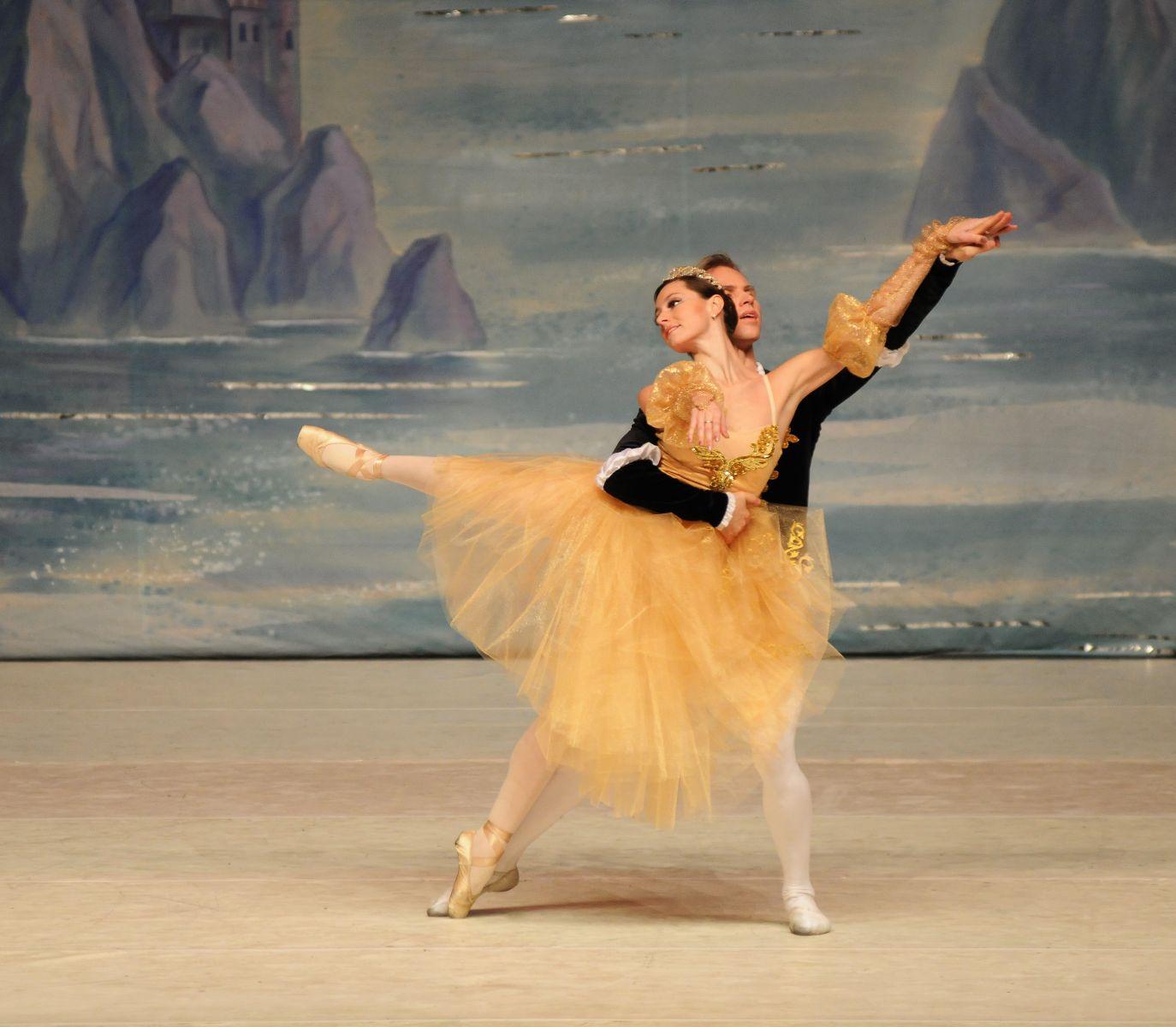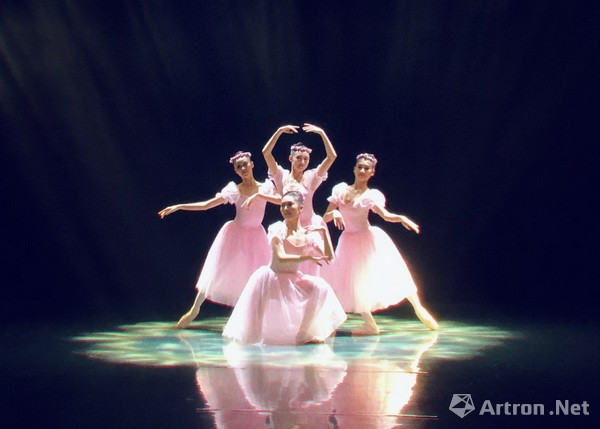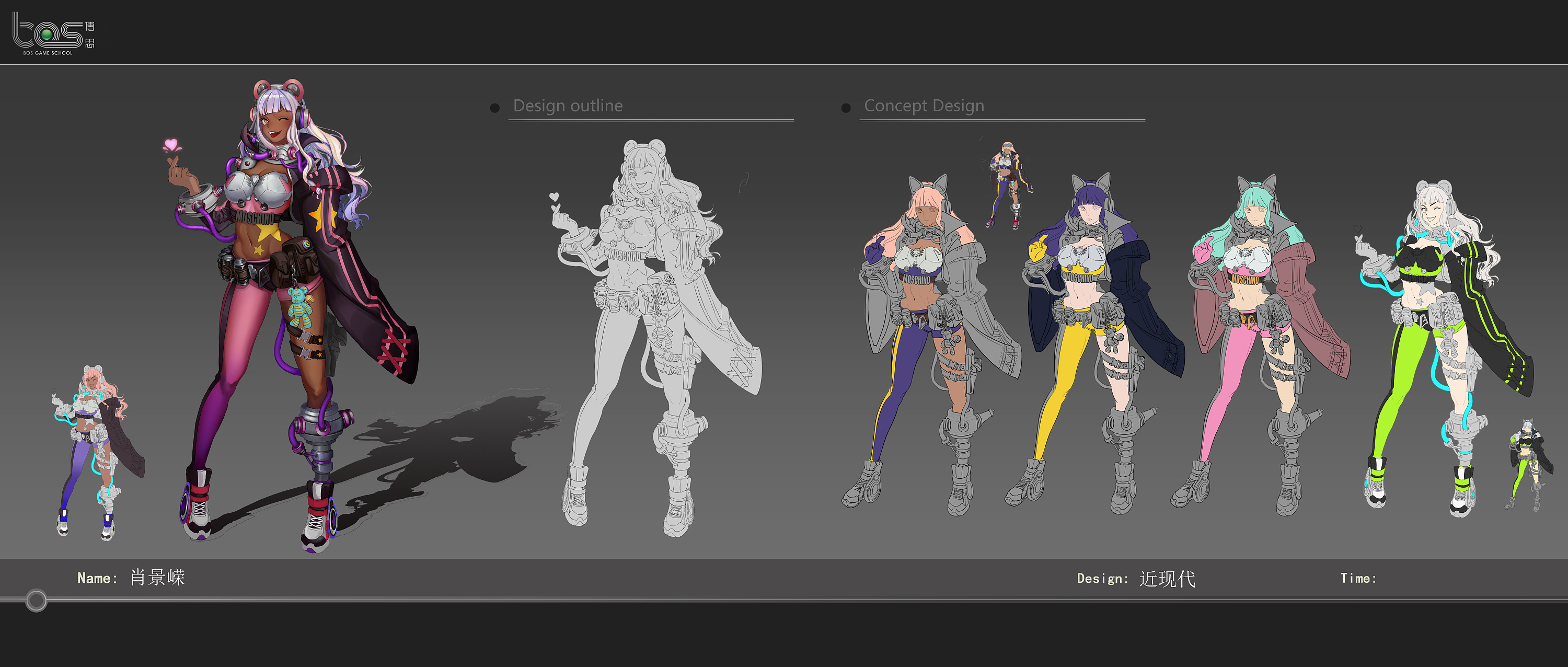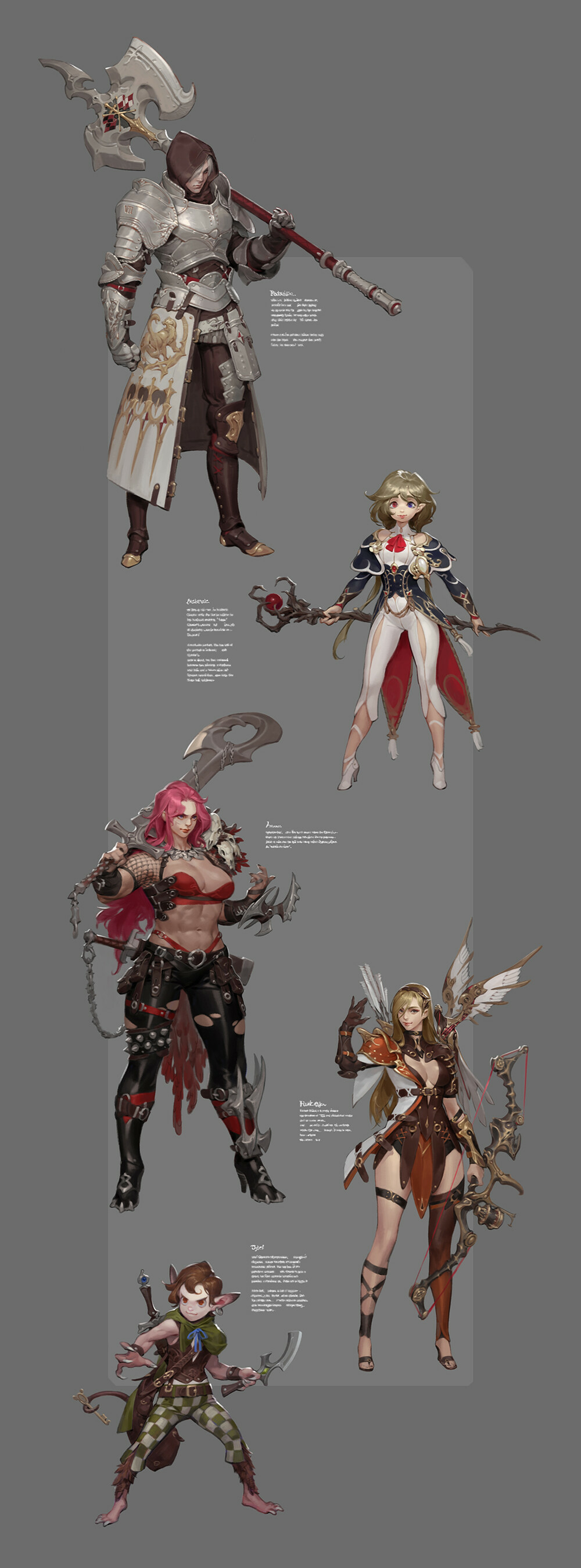Luo Jianping (Department of Music, Gannan Normal University, Ganzhou, Jiangxi): Dance is an art with an ancient and long history. It reflects and expresses people’s social life, thoughts and emotions. Due to the differences in history, culture, and living habits of countries and regions around the world, The differences will inevitably produce many dances with different styles and characteristics. This article discusses the origin and formation, characteristics and characteristics of classical ballet and modern dance, as well as dance performances, so as to have a clearer understanding of classical ballet and modern dance. The key Words: Classical ballet; modern dance; dance CLC number: J705 Document identification code: Article number: 1004–0120-03 Dance is a plastic art that uses people's inner vitality to express the rhythmic movements and gestures of the human body. It It originated from the simulated reproduction of ancient human activities such as labor life and combat drills for survival, as well as the ritual activities of totem worship, religious witchcraft and the inner impulse to express one's own emotions and thoughts. It is generated in combination with music and poetry, and is used in dance In the development process, some of the practical functions have weakened or disappeared and evolved into entertainment content. Since dance reflects human social life, different social lives will produce different types of dance. The development of dance art to this day has been divided into refined and popular. There are classical and modern dances. Therefore, when learning classical ballet and modern dance, you must understand their style characteristics and grasp the differences between them, so as to achieve the purpose of better performance and appreciation. 1. Classical Ballet (1) The origin form of ballet is a transliteration of French. Classical dance dramas from various European countries are collectively called ballet. It is a dance variety that uses European classical dance as the main means of expression and integrates music, drama, stage art and other art forms.
Classical ballet is relative to modern ballet. It refers to a dance art form from the 14th century to the end of the 19th century. Ballet was originally a kind of mass self-entertainment or square performance dance in Europe. When it became a comprehensive stage art, it originated in Italy during the Renaissance in the 14th century. The ballet at that time was based on the folk dances of various European countries, taking the plastic arts of ancient Greece as its aesthetic style, absorbing dance materials processed from Asia and Africa, and integrating music, pantomime, and stage art to express a sequence. The dramatic art of plot or story was a popular art form in European countries at that time. Ballet was only formed in the French court in the 17th century. The world's first royal dance school founded by French King Louis XIV in Paris established the five basic foot positions and twelve hand positions of ballet (the five basic foot positions Still used today (the twelve hand positions are now simplified to seven hand positions), strict norms and structural forms have been formed in its development. Its most important feature is that the actress wears special shoes and dances on tiptoe. French court ballet combines dance, music, singing, recitation and drama. In the mid-18th century, Jeanya, the ballet master, first proposed the idea of "plot ballet", which brought ballet to a new stage. Major changes have taken place in terms of subject matter, content, music, costumes, techniques, etc. Ballet has never been the same again. It is no longer bound by drama and becomes an independent art category. (2) Features and Characteristics) Opening: It refers to the extensor opening of ballet students from the five major joints such as shoulders, chest, hips, ankles, etc., in order to make the most scientific and optimal use of the huge movement potential contained in their bodies. Fully developed.

Because only when the five joints such as shoulders, chest, hips, and ankles are partially "opened" can the body be more flexible, moldable, and stable, and can it be easier to change the direction of movements at any time, and can it better complete those graceful movements. , fascinating variety of changing skills on the ground and in the air. ) Stretching: It means that people who learn ballet need to "stretch" all parts of the lower limbs such as the hips, knees, ankles and insteps. Ballet is a linear art. Only when it is "stretched" can the original lines of the limbs be more effectively extended, making the dance postures and shapes more generous and stretched. Ballet is also an art with airborne activity. In order to make the body airborne and jump, the dancer must also rely on the power of "stretching" to quickly jump. Journal of Gannan Normal University 2003 Received date: 2002-11-18 About the author : Luo Jianping (1956—), male, from Ganzhou City, Jiangxi Province, lecturer in the Music Department of Gannan Normal University. The energy of tightening the muscles in various parts of the body is concentrated towards the center line of the human body, and then through the clever cooperation of the limbs, the vertical or front and back jumping movements and skills can be completed lightly. Only when the "tightening" is straightened, the dancing posture can be more upright and straight. moving. ) Straight: It means that people who learn ballet need to develop a straight and flexible back. Only with a straight and flexible back can you have an upright posture. With an upright posture, when practicing pointe, the toes can be completely upright. The toes support the entire center of gravity of the human body, causing the center of gravity of the entire body to converge and lift as much as possible. Try your best to launch energy into the air to give people a more prominent sense of space occupation. Ballet's rotations, jumps, and leg control postures are all perfect expressions of "straight" posture.

) Lifting: refers to lifting every joint and muscle of the human body, as if the human body becomes lighter and lighter. "Standing" gradually forms a feeling of upward lifting with the cooperation of training muscle quality and ability, which helps to complete the jumping, rotating, and lifting movements, so that the dance has direction and spatial changes without being dull and lifeless. Open, stretched, straight and upright are the basic postures of classical ballet, reflecting the rigor and standardization of basic classical ballet training. Basic Characteristics Lightness is a fundamental characteristic of ballet. Lightness in ballet can help actors shape and visualize their roles (such as the elf and the happy princess in "The Sleeping Man"), and enable actors to jump and take off powerfully. Accompanied by lightness, their feet seem to be flying in the air. Desire to fly (eg: "Ancient Clarity" is another basic characteristic of ballet. Dance is an ephemeral, non-verbal art that expresses plots or stories through actors' performances and music, so clarity is indispensable. In classical In ballet, music and actors can reflect the character's personality and emotions. Therefore, the clarity of the mental outlook shows whether the actor can integrate the music style and dance breath, giving people a beautiful enjoyment, using dance to see through a culture and express a culture. Spirit. It can clearly show the unique palace temperament of classical ballet. The basic nature of classical ballet is its graceful and elegant nature. The graceful and elegant style makes the dance steps look effortless, fully showing the demeanor of the aristocratic gentleman of the court. Graceful and elegant The dance movements are run through with a rigorous and silkless stream, which is the highest form of expression unique to classical ballet. (3) Stage performance Classical ballet is a kind of court art, which plays an irreplaceable role in dance types.

Classical ballet is an aesthetic art, so the elegant dance postures and standardized straight legs, leg extensions, pointe dance skills, jumps, and whirls… all present a distinctive style, and the movements are perfectly smooth, delicate and complex in one go. The beauty. The high aristocratic demeanor, splayed shoulders, chest, hips, and feet, coupled with the graceful and luxurious clothing, plus the light and thin figures floating on the toes, are so ethereal and elegant, it will always make people crazy. fan. 2. Modern Dance (1) Origin and Formation Modern dance is a dance genre that emerged in Europe and the United States at the end of the 19th century and the beginning of the 20th century. Its main aesthetic point of view is to oppose the formalist tendency of classical ballet to be conservative, divorced from real life and purely pursuing skills; it advocates getting rid of the constraints of classical ballet's overly rigid movement programs, and using dance movements that conform to natural movement laws to freely express human reality. Emotion, emphasizing that dance art should reflect modern social life. By the 19th century, European classical ballet had shown a tendency to be rigid, stylized, and pursue one-sided techniques, and classical ballet began to decline. The end of the 19th century was the period when the bourgeoisie phase began to dominate. The social information of the era was complex. It affected artists from many aspects, thus forming their own artistic characteristics and theoretical schools. In terms of dance, at the beginning of the 20th century, the American Isadora Duncan challenged traditional ballet. She completely broke with classical ballet, advocated "returning to nature", fully used the human body as a means of expression, and bravely expressed her will. Let subjective emotions play a leading role in the art of dance. She dared to challenge traditional conservative ideas, and was therefore known as the "Father of Modern Dance." After analyzing the coordination of the brain, nerves and muscles, the Hungarian Rudolf Laban proposed a set of principles for expressing expressions and exploring human body movements. and the maximum limit of expression.

He established the physical training method of modern dance with the purpose of enabling actors to use their own movements to fully express their inner motivations and feelings. Laban also created dance notation, and he is known as the "Father of Modern Dance Theory." Modern dance gradually took shape under the continuous creation and improvement of pioneers such as Duncan and Laban, but modern dance does not seek to create a fixed system, nor does it pursue eternity and immortality. It constantly denies others and constantly denies itself, so it is a "revolution" that is never completed and continues to move forward. (2) Characteristics and characteristics of basic postures The posture of modern dance is "returning to nature", but "returning to nature" is not an arbitrary natural movement, but a natural movement that conforms to objective laws. It is a contraction and relaxation technique based on breathing techniques and rhythm. It is based on the muscle and nerve responses generated by internal or external stimulation of the body, plus exaggerated, rough, and powerful rhythms to fully utilize the potential of the limbs. sports potential to reveal people’s inner world and convey various life experiences. Basic characteristics: Modern dance is an advanced thought and spirit. It is an art form that keeps pace with the times and transcends the times. Modern dance is opposed to traditional dance art. It reveals the mystery deep in the soul, that is, the spirit that transcends itself and develops infinitely. Under the guidance of this spirit, modern dance has both the originality and the classics of the times. It takes continuous innovation as its mainstream and continuously pushes the art of dance forward. The language of modern dance itself is characterized by ambiguity.
However, the vague characteristics of language should not be the reason why the meaning of the work cannot be conveyed clearly. In other words, a specific dance movement of modern dance can be a "word" with multiple meanings, but the meaning of the work itself should be clear. What the choreographer hopes to convey to the audience should be clear, and it should be able to make the audience understand Somewhat understanding. In order to achieve this, choosing the most appropriate movements to express all the artistic connotations is the basic starting point of dance art creation, and it is also the most important point in artistic creation. The basic nature of modern dance breaks the old constraints of dance forms and the aesthetics of classical ballet, making full use of body language to express the inner spiritual world of the choreographer. Make dance not only an art for entertainment or appreciation, but also a noble art with profound content that can express human thoughts. (3) Stage performance Because modern dance uses movements that conform to natural movement laws as dance movements, it freely expresses people's sincere emotions and emphasizes the reflection of modern social life. Therefore, the stage art and lighting system called "freehand drama" in our country, as well as polymodal, atonal, and lack of melody music, appeared to serve modern dance performances. Under the changes of these factors, from the beginning to the end of modern dance, the movements cling to each other, depend on each other, and are indispensable. Therefore, many novel movements will appear during the performance, such as unique connections, transitional movements, and unique shapes. These are just to better and more uniquely reflect modern social life and the inner world of the author, so as to achieve the continuous innovation of modern dance. In summary, due to the social attributes of dance, it is not only for people’s entertainment and appreciation, but also It reflects different thoughts and life issues in different societies.
Classical ballet is a product of European classical dance and originated from the court. It is a kind of aestheticism that expresses perfect human nature and expresses the inseparability of human noble sentiments and will. It hides the pure inner emotions, this sincere emotion of the pursuit of a better life, which is the artistic charm of the fresh classical ballet genre. If today's classical ballet wants to be nationalized and mass-oriented, it is important to pay attention to the development of thinking, artistic conception, conception, vocabulary, music and other issues. Modern dance is a product of capitalist society after classical ballet and has a certain pioneering spirit. It is based on advanced ideas, pursues spiritual liberation, and uses its own body language to reflect society and one's own inner world. As modern science continues to penetrate into the field of art, modern dance is becoming more and more scientific. Therefore, it is necessary to create modern dance that is "contemporary" with a modern spirit and scientific attitude. The biggest difference between classical ballet and modern dance is that the former uses rigorous, standardized and perfect technical movements to restrain one's emotions, while the latter uses natural movement laws to reflect real life and express one's emotions, daring to innovate and make breakthroughs. The old model. Only by understanding and distinguishing them can we correctly grasp the style characteristics of the two and better perform and appreciate the two different styles of dance. Editor in charge: Han Shanshan-ping .. . Journal of Gannan Normal University 2003




